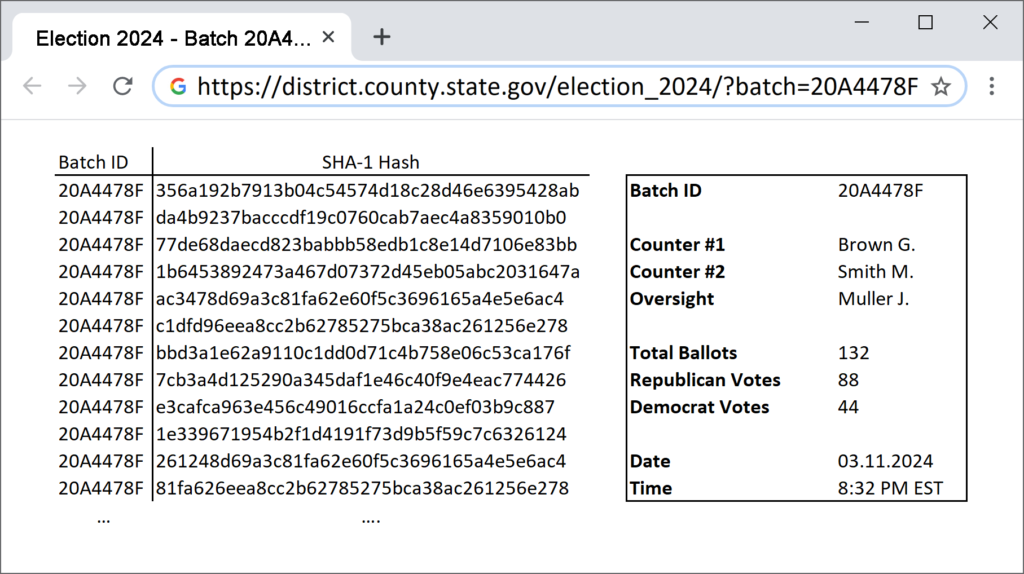reduces the likelihood for wrong counts and lost votes.
It aims to have the final count done on election day and votes not processed by machines but by humans.
Crypto mining has shown that competition increases effectivity as competitors will optimize operations to maximize profit.
A process of competition and reward is put into place that incentivize for fast and correct counts. A three-tiered gratification system compensates
- a small amount for every correctly counted vote (e.g. 10cent),
- a bigger reward at the end of election day to those that correctly counted the most votes,
- and for any accidentally discovered fraudulent ballots.
A counter can be any citizen that is able to provide a valid ID. Ballots are bundled into batches and each batch is then assigned to two random counters. If their individual count matches, both counters and one person from the oversight sign off on the batch and the ballots are added to the final count. If not, the batch is further distributed to other counters until an identical count appears.

This ensures that every ballot is at least seen by two different people and the count confirmed to be correct by a third person.
In combination with Hash Ballots it can also be recorded which ballot has been counted, by whom and when.
By additionally implementing Transparent Publishing this can also be tracked in real time as this fictional photomontage illustrates:

Notes
If the competitive reward is sufficiently big people will train and prepare in advance to count fast & correct.
They will be inclined to get the vote count done as fast as possible, meaning ultimately on election day.
Angles of attack
Corrupt counters arrange fixed reporting (Critical)
Oversight must arrange batch distribution that counters are unknown to their correspondent verification partner.